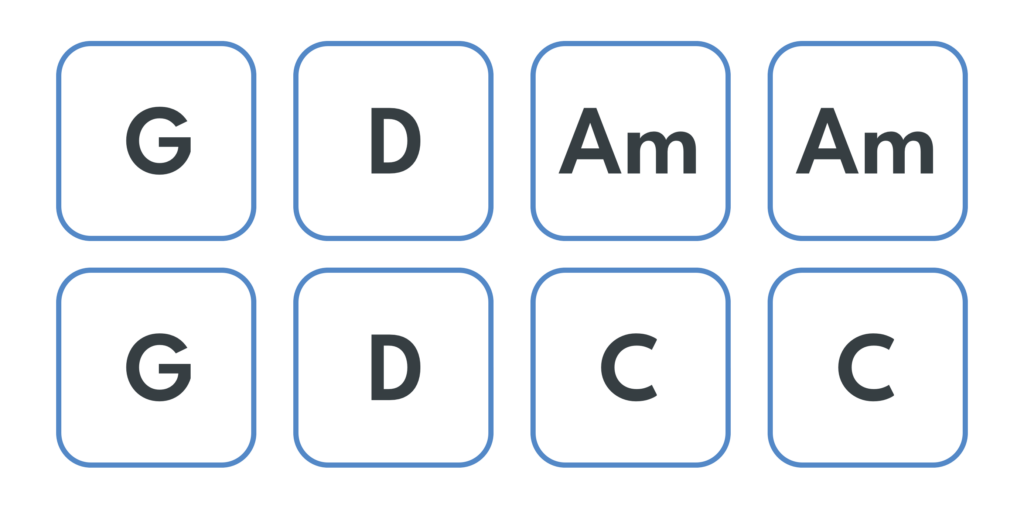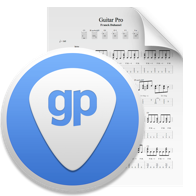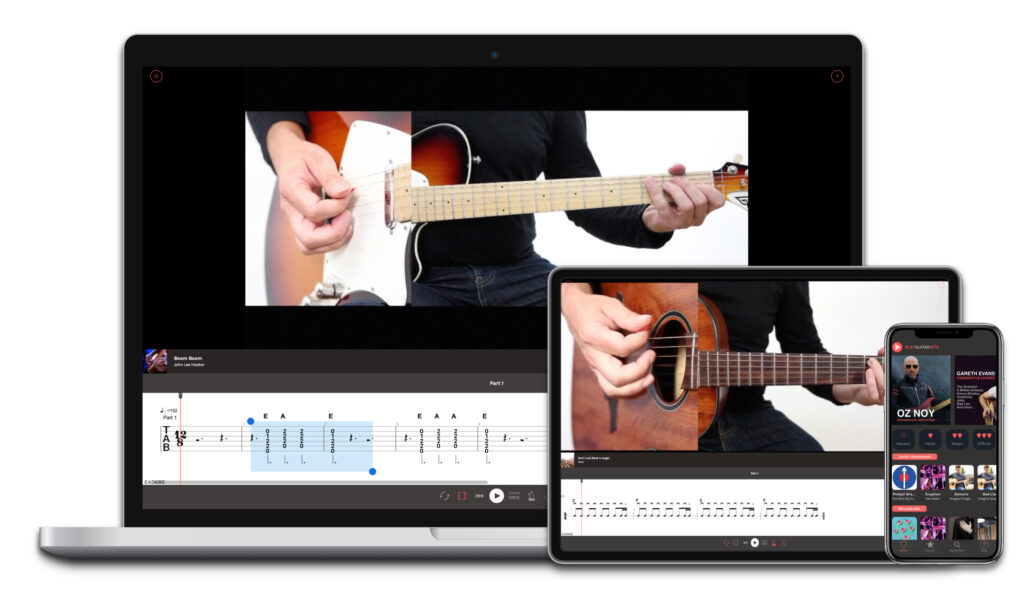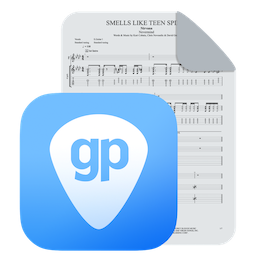
10 Essential Strumming Patterns for Guitar
- What’s an accompaniment?
- How to practice chords on the guitar?
- How to change chords?
- How to change chords quickly?
- How does strumming work on guitar?
- How to start learning guitar strumming?
- What are the steps to play a rhythm correctly?
- Summary of the steps to follow to learn a rhythmic pattern.
- Practice 10 famous strumming examples.
- Conclusion
- How to access the interactive scores?
- article-blog-gp-strumming1-.gp
- article-blog-gp-strumming-6-1.gp
- article-blog-gp-strumming-8-1.gp
- article-blog-gp-strumming-9-1.gp
- article-blog-gp-strumming-10-1.gp
- article-blog-gp-strumming-11-1-1.gp
- article-blog-gp-strumming-12-1.gp
- article-blog-gp-strumming-13-1.gp
- 01.big-jet-plane-part2-1.gp
- 02.-imagine-part3-1.gp
- 03.while-my-guitar-gently-weeps-part2-1.gp
- 04.ho-hey-part1-1.gp
- 05.hotel-california-part2-1.gp
- 06.mrs-robinson-part2-1.gp
- 07.rolling-in-the-deep-part4-1.gp
- 08.the-man-who-sold-the-world-part2-1.gp
- 09.no-surprises-part2-1.gp
- 10.watermeling-sugar-part1-1.gp
Playing the right strumming pattern with the right feeling on guitar is not an easy task at all! In this article, discover where to start and how to get better at it. Then practice these 10 rhythm patterns from great pop songs. Let’s go!
What’s an accompaniment?
The accompaniment is the rhythmic and harmonic support (the chords) that comes to support the melody which is usually played by a voice or an instrument.
First of all, you have to identify the role of the hands on the guitar. For right-handed players, the right hand is in charge of the rhythm and the left hand is in charge of the harmony (chords), and vice versa for left-handed players.
Regarding harmony, in the examples below, you will learn several chord shapes. You will discover open chords (chords with open strings, it means without pressing a finger on the neck), detached bass chords, and bar chords with three and four sounds.
You will also need a capo.
For rhythm, we will cover the strumming technique, which is the most common technique for playing a chordal rhythm.
The lesson will be divided into 2 main parts:
– a first chapter where we will focus on how to learn and practice chord progressions, and then we’ll take a look at the mechanisms which constitute the technique of strumming.
– then a second chapter will illustrate this lesson by giving examples of strumming patterns from 10 hit songs.
How to practice chords on the guitar?
A first approach to studying chords is to identify them by memorizing them in order to build up a collection of chords that will make it easier for you to learn new songs.
The second step is to concentrate on the sound of the chords, making sure that each string is played correctly.
To do this, you will play each string one after the other to check if one of them is not muted.
It is also possible that if your fingers are not close enough to the high frets the string will not sound right. Bring your fingers as close as possible to the high frets.
After you have solved all these technical problems to memorize the chords, I advise you to play the chords by releasing them and then repositioning them several times in a row.
How to change chords?
The first step in the study of a rhythmic pattern is to work on the chord progressions.
You must identify the chord progressions that are causing you difficulties and do not hesitate to isolate them by working on them until you can change them more easily.
How to change chords quickly?
Using the example of the “Knocking On Heaven’s Door” chord progression:
You will have to be able to repeat this sequence of chords several times in a row as fast as possible without tempo just by playing one chord after the other.
As soon as you are comfortable with the chord sequences, I advise you to play them with the metronome in quarter notes according to the number of beats per bar and per chord. Start with a slow tempo and speed up as you go along.
Click on the picture to download the Guitar Pro 7 file.
Once you manage to play the chords correctly, you’ll need to concentrate on the rhythm. I remind you that it is the right hand (for a right-handed person) which is in charge of the rhythm.
Click on the picture to download the Guitar Pro 7 file.
How does strumming work on guitar?
Strumming is an accompaniment technique that consists of brushing the strings rhythmically according to a pattern indicated on the score.
How to start learning guitar strumming?
This technique requires a movement of the right hand from bottom to top which is played without stopping its flow, like the ticking of a clock.
This movement must remain constant in order to obtain a fluid play to avoid a choppy interpretation of the rhythm.
The terms used to describe this sensation, which gives the listener an irresistible urge to stamp their feet or even dance, are called “swing” or “groove”.
The strumming technique is based on an eighth or sixteenth note rhythm.
To feel the rhythm better, I recommend that you play all your rhythms with a metronome and with the foot that will mark the beats. It can be played with a pick or with the fingers.
What are the steps to play a rhythm correctly?
First of all, you have to concentrate on your right hand. The left hand will remain fixed to avoid handling too much information at the same time.
In the examples below, you will position an Em chord.
Once you understand how strumming works from the songs and rhythmic examples in the article, as well as the songs you may study in the future, you will have enough vocabulary and ideas to create your own patterns.
To understand the strumming technique, we will start with a rhythm on a binary form in eighth notes and then in sixteenth notes.
You will notice that your right-hand movement doesn’t stop.
Click on the picture to download the Guitar Pro 7 file.
For this example, we are going to apply two rhythmic patterns. This is typically the type of pattern that you will be able to use again on most of the songs you will study in the future.
All you need to do is change the tempo and the chords.
As mentioned above, the strumming technique is based on a constant right-hand movement.
In these two rhythm examples you will find that the rhythmic shapes change, and so to keep your right-hand movement constant you will need to play the pick stroke without carrying it over the strings to maintain the movement.
I insist on the fact that it is mainly this non-stop playing of the right-hand pick on the strings or in the air that will bring the swing to your rhythm!
: when playing chord progressions, you can anticipate the change and play open strings before the next chord.
Click on the picture to download the Guitar Pro 7 file.
Click on the picture to download the Guitar Pro 7 file.
Click on the picture to download the Guitar Pro 7 file.
Click on the picture to download the Guitar Pro 7 file.
Click on the picture to download the Guitar Pro 7 file.
Summary of the steps to follow to learn a rhythmic pattern.
- Check that each chord sounds right when playing them.
- Play the chord progressions several times in a row, first without any tempo or constant speed, then play along with a metronome at a slow tempo that you speed up gradually to get the actual tempo of the song.
- If the pattern is the same for the entire progression, practice the the strumming with one chord and then to the end. Don’t hesitate to slow down the tempo.
- Finally, add all the other strumming patterns to the full progression.
Practice 10 famous strumming examples.
These 10 songs are available in the Play Guitar Hits application.
The application will allow you to slow down the score, add a metronome or a countdown, and even play along with the songs with high-quality backing tracks.
In Play Guitar Hits it is also possible to choose the camera angles, either on the right hand, the left hand, or both!
Try it for free for 7 days here.
Big Jet Plane (part2)
This rhythmic pattern is not really considered strumming, but it is perfect for starting to study rhythmic patterns.
Don’t forget to add a capo on the first fret.
In this song, you will use the palm mute technique, which consists of slightly muting the strings with the palm of the right hand placed on both the bridge and the strings.
Start slowly by playing the eighth notes with downward strokes of the pick.
Click on the picture to download the Guitar Pro 7 file.
Imagine (part3)
This song is based on sixteenth-note strumming. The rhythmic formula is broken down into two beats.
On the second beat pay attention to the back and forth movement of the pick. Note that these two sixteenth notes are played on open strings in order to anticipate the chord changes, as mentioned earlier in the article.
I advise you to play each chord change in groups of two bars.
Click on the picture to download the Guitar Pro 7 file.
While My Guitar Gently Weeps (part2)
In this Beatles song, you can practice strumming on two beats for each chord.
First of all, I advise you to work the rhythmic pattern with the Am chord, in a loop, before playing all the chords.
On the first beat, which has two eighth notes, pay attention to the two upward pick strokes that are virtually played, without hitting the strings.
You will notice 2 chords Am/G and Am add11/F# in which you have to mute the A string. Am/G means that you play the Am chord but you add the bass note of the G chord to it.
For Am/G, the fourth finger should be slightly tilted to mute the A string, and for Am add11/F#, the second finger should be tilted to mute the A string.
Click on the picture to download the Guitar Pro 7 file.
Ho Hey (part1)
This rhythmic pattern begins on the “and” of the fourth beat in anacrusis, before the first beat of the first bar. The strumming is written in a sixteenth note rhythmic form.
Pay attention to the first beat of the C chord. To play the four sixteenth notes well, you’ll have to play the first pick stroke down on the strings and then into the air, without hitting the strings.
Also pay attention to the fourth sixteenth note of the second beat which is linked to the eighth note of the third beat, implying that the first and second sixteenth notes of the third beat are played without hitting the strings.
Click on the picture to download the Guitar Pro 7 file.
Hotel California (part2)
The rhythmic pattern used in this classic song is based on a rhythmic formula made of sixteenth notes.
Please notice that the second and sixth bars have got half notes in them.
You could stop your right-hand movement, but in order not to break the swing I advise you to mark all the pick strokes when you have to play the half notes.
Click on the picture to download the Guitar Pro 7 file.
Mrs Robinson (part3)
For this song, put the capo on the second fret.
The difficulty of this song lies in its strumming, which is played in an eighth-note pattern at a fast tempo.
Of course, I would advise you to slow the tempo down by half and increase it gradually to get to the initial tempo. A stronger pick stroke on the second and fourth beat will add relief to the strumming.
Click on the picture to download the Guitar Pro 7 file.
Rolling In The Deep (part4)
For this song, you’ll have to put a capo on the third fret.
For this pattern played on an eighth note rhythm, in order to give relief to the rhythm, you will have to accentuate the second and fourth beats with a stronger pick stroke than the others.
Don’t hesitate to anticipate the chord change one eighth note before the next chord by playing the open strings as indicated on the score.
Click on the picture to download the Guitar Pro 7 file.
The Man Who Sold The World (part2)
The particularity of this eighth-note strumming lies in the control of the left hand, which mutes the strings on the strong beats two and four.
For the “A” chord, the second, third, and fourth fingers graze the strings to obtain a muted note.
For the “Dm” chord, it will be the third finger that will mute the strings. For the “F” it is the whole of the fingers that rise while brushing the strings.
For the “C” it is the fourth finger that will mute the strings.
Click on the picture to download the Guitar Pro 7 file.
No Surprises (part2)
You’ll need to put a capo on the second fret to play this song.
The strumming is made of a sixteenth-note rhythmic formula.
The difficulty of this rhythmic pattern is to play it correctly until the end of the second bar.
Isolate the last two beats of the second bar by playing the pattern very slowly, and at the same time, be careful to play the pick strokes correctly, then gradually speed up by adding first the metronome and then the foot on all beats.
Click on the picture to download the Guitar Pro 7 file.
Watermelon Sugar (part1)
This rhythm is not easy to play, it is written on a sixteenth note rhythmic division. I strongly advise you to practice it bit by bit by breaking down each movement as much as possible.
On the first beat, you should pay attention to the hammer-ons in the sixth fret of the B string and the seventh fret of the D string.
Play 2 pick strokes on the “Dm7” on the first and fourth sixteenth notes.
Dead notes are played with the fingers slightly raised in the left hand but still in contact with the strings.
Click on the picture to download the Guitar Pro 7 file.
Conclusion
I hope you enjoy studying the rhythms suggested in this article!
Work at your own pace.
You will find many songs using these techniques in the Play Guitar Hits application:
How to access the interactive scores?
- Download the Play guitar Hits application on Android in Google Play or on iOS in the App Store or Mac App Store.
- Launch the application and write the title of the song you are looking for in “search”.
- Then you can choose to activate the 7-day free trial to access it.
Leave a comment
Your email address will not be published.








7 Comments
Hi,
I’m a U.S military veteran.
Do you have any military discounts?
Thankss
Hi Mark,
I regret we do not have such discounts. We do not have any promotional offer planed at the moment but feel free to subscribe to our newsletter to know when the next promotional offer will be. You can subscribe from the bottom of this page:
https://www.guitar-pro.com/
Thanks for your comprehension and the interest you have in our products.
first time in this site
I wish I could read music ! Especially in large print for 70 year old eyes.
Hi Anthony, in Guitar Pro you can display the whole score on your screen and zoom in too. Thank you.
Super, half year of teaching material….
Great job.